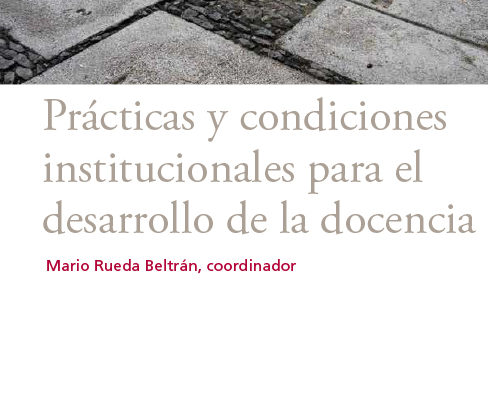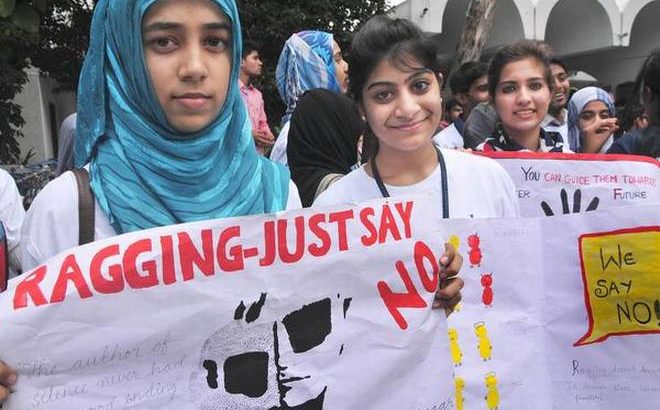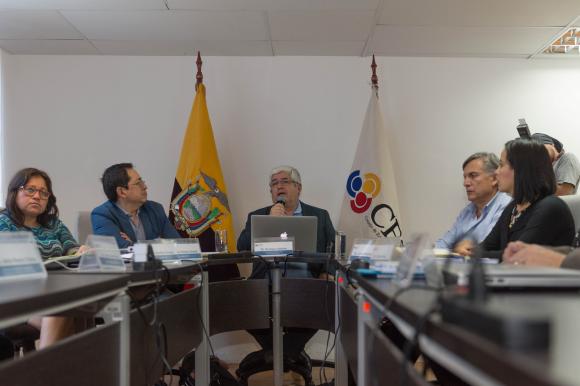Study reveals that hostel residents are the worst-hit; the incidence is more in professional colleges, and a majority of the victims are male
Ragging in educational institutions is truly alive and kicking. Four out of every ten students admitted to higher educational institutions have been victims, a study commissioned by the University Grants Commission has found.
The study, titled ‘Psychosocial Study of Ragging in Selected Educational Institutions in India’, was done during 2013-14 in 37 colleges and universities across the country. It scrutinised the experiences of 10,632 students from different demographic profiles.
The study encompassed 13 colleges from the northern parts of India, 10 from the south, six from the east and eight from western India. The surveyed institutions included nine medical colleges, 11 engineering colleges and nine ‘degree’ colleges and universities.
“Analysis of the overall data reveals that almost 40% students admitted to having gone through some kind of ragging — 35.1% students faced mild ragging and 4.1% students were subjected to severe ragging. However, college-wise analysis shows significant variations in these values,” the study states. It not only highlights occurrence in terms of numbers and frequency but also deals with the prevalence of the practice irrespective of places, types of courses and gender divide. The study discusses causes and consequences.
The practice continues despite multiple judgements by the Supreme Court over the past two decades seeking to curb it. The court in 1999 and 2007 issued guidelines to curb ragging and felt the need again in 2009 to set up a committee of mental health and public health professionals to study the menace.
The study finds ragging is more prevalent among hostel residents at 45.9%, when compared with the 32.5% incidence seen among day scholars. The incidence was more in professional courses such as medicine and engineering — approximately 48.3% in medical colleges and 44.5% in engineering colleges. The figure is 28.8% for other courses. Instances of ragging was much higher among males.
Reported in media
The study examines ragging incidents reported in major media outlets between January 2007 and September 2013, and analyses 717 cases. The highest number of 97 was reported from Uttar Pradesh. The figure was 75 for Andhra Pradesh, 73 for West Bengal, 54 for Tamil Nadu, 48 for Kerala, 48 again for Madhya Pradesh, 42 for Maharashtra, and 35 for Punjab. “A total of 71 deaths due ragging was reported in that period. There were 199 cases of ragging that led to minor and major injuries to students, including 81 incidents leading to hospitalisation and causing permanent disability,” the report states.
According to the study, factors such as individual appearance, region of origin, language spoken, sexuality, and caste were factors involved in the incidents. About 20.7% of students who admitted to having been ragged said they were targeted for their looks and appearance. About 15.6% attributed it to their region of origin and 12.2% to their mother tongue.
The report states that the ability or inability to speak English often becomes a basis for discrimination and a factor in ragging.
The qualitative and quantitative data highlighted the fact that sexual harassment in the name of ragging is prevalent in some institutions. While 4% students admitted to having faced sexual ragging, more than 10% faced it in some institutions.
Harsh Agarwal, one of the authors, said there was remarkable variation in the prevalence of ragging across colleges and institutions. In some institutions the prevalence was as high as 75%, which pointed to the significance of institutional factors. “The response of a particular institution to ragging complaints and the attitude of the faculty [members] are the most important factors in influencing ragging,” Mr. Agarwal said.
Data collection was done between February 2013 and February 2014. Experts analysed the data in 2014 and 2015. Mr. Agarwal, Professor Mohan Rao, Dr. Shobna Sonpar, Dr. Amit Sen, Professor Shekhar Seshadri and Divya Padalia authored the 252-page report. It was submitted to the UGC in early 2016 and released on August 11, 2017.
Surveillance tools
Academicians and researchers said that during field visits it was observed that ragging was less prevalent in institutions that promoted a healthy interaction between teachers and students, and when there was a sense of community on the campus. Surveillance tools such as CCTV cameras proved to be ineffectual as they often induced a sense of complacency among administrators.
The researchers also noted some interesting anecdotes. In a medical college in Uttar Pradesh, the research team was having an informal conversation with a peon when a senior faculty member instructed him not to talk to the team. “The faculty member was afraid that the peon could reveal information pertaining to ragging,” the report states.
A girl student interviewed at a Delhi college said she was targeted because she was an ‘outsider’ and hailed from Bihar. Many students broke down while narrating their experiences. Many refused to talk inside the campus and quietly handed over their numbers so researchers could speak to them over phone.
33% enjoyed ragging
Curiously, of the students who admitted to being ragged, 32.6% said they enjoyed the experience, while 45.1% admitted to feeling bad only initially. Negative emotional experiences such as feeling angry was reported by 19.1% students, 12.1% said they felt helpless, and 8.6% felt ashamed and humiliated.
The researchers had a set of questions to assess the students’ level of support to ragging. The results show that 33.8% of students felt ragging helps build confidence and develop personality traits, and 34.8% felt it toughened them mentally. As many as 35.7% felt ragging prepares a student to deal with the harsh world outside.
“This normalisation of ragging is very dangerous, where the students are socialised into thinking that the world outside is a tough place and that a toughening-up exercise will help them succeed in this harsh world,” Divya Padalia, a co-author of the report, said.
Fuente :http://www.thehindu.com/news/national/ugc-study-confirms-widespread-ragging/article19611049.ece
Imagen:https://lh3.googleusercontent.com/khdiTALEr9JVJj1u3nphuc6YKuYvWh8h1VturUoOgrS4PwZhs9ba8eHSWhvdxhlETC7JWw=s85















 Users Today : 22
Users Today : 22 Total Users : 35460846
Total Users : 35460846 Views Today : 36
Views Today : 36 Total views : 3420113
Total views : 3420113